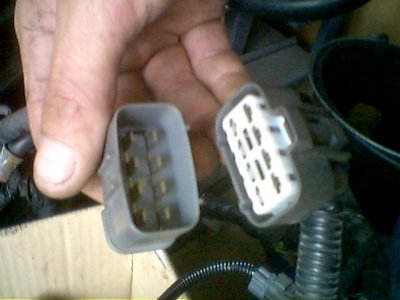This is how we located and fixed the problem, we used a CO-meter to analize the exhaust fumes.The apliance can measure the %O2, the %CO the amount of parts HC(=petrol not burned)and calculated lamda.
At first we see a lot of CO 2.5% instead of 0.49%,this indicates a rich mixture.
We also see approx. 2000 ppm HC indicating a lot of not burned petrol.
Final reading was 5% O2 in the exhaust.
This gave is the certanty that one (ore more) cylinder was not igniting and therefore is feeding O2 and fuel into the exhaust.
Now we started disconnecting each coil pack, one at the time to determine which cylinder was bad.Found it instantly and exchanged the coilpack, no go,same problems.
Now we started measuring, black/yellow wire should deliver battery voltage to coilpack, only gave about 10 volts.
It turned out that all six coilpack wires are conneected to the connecture in the above picture(that is my hand by the way).
We could not see anything wrong, but after cleaning and reconnecting the voltage was correct and all problems solved.
TIP: IF YOU SUSPECT DEFECTIVE COILPACKS TRY CLEANING THIS CONNECTOR!






